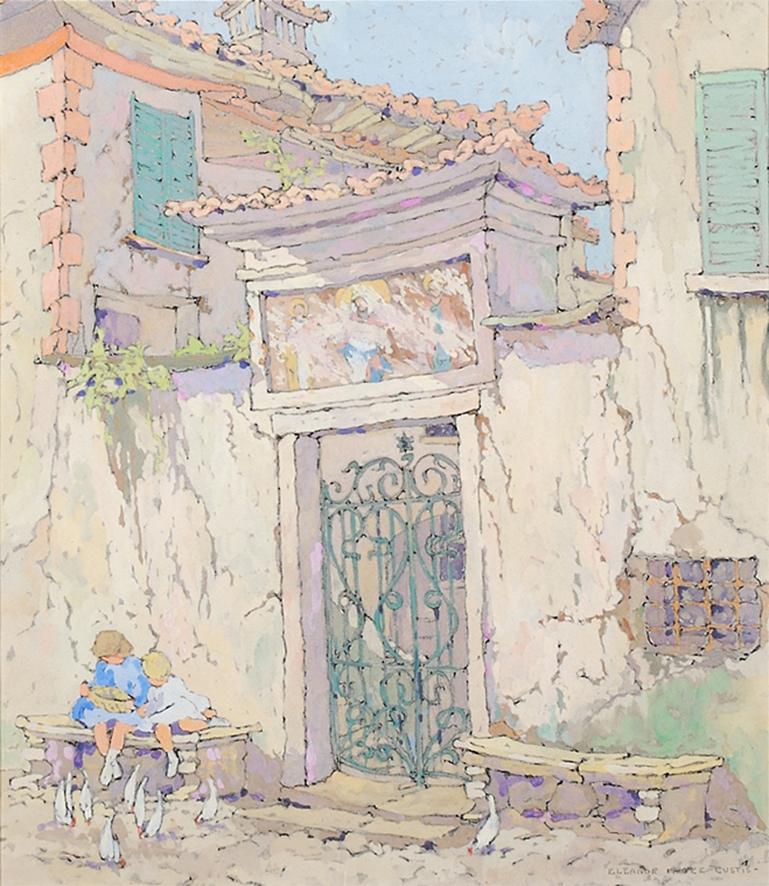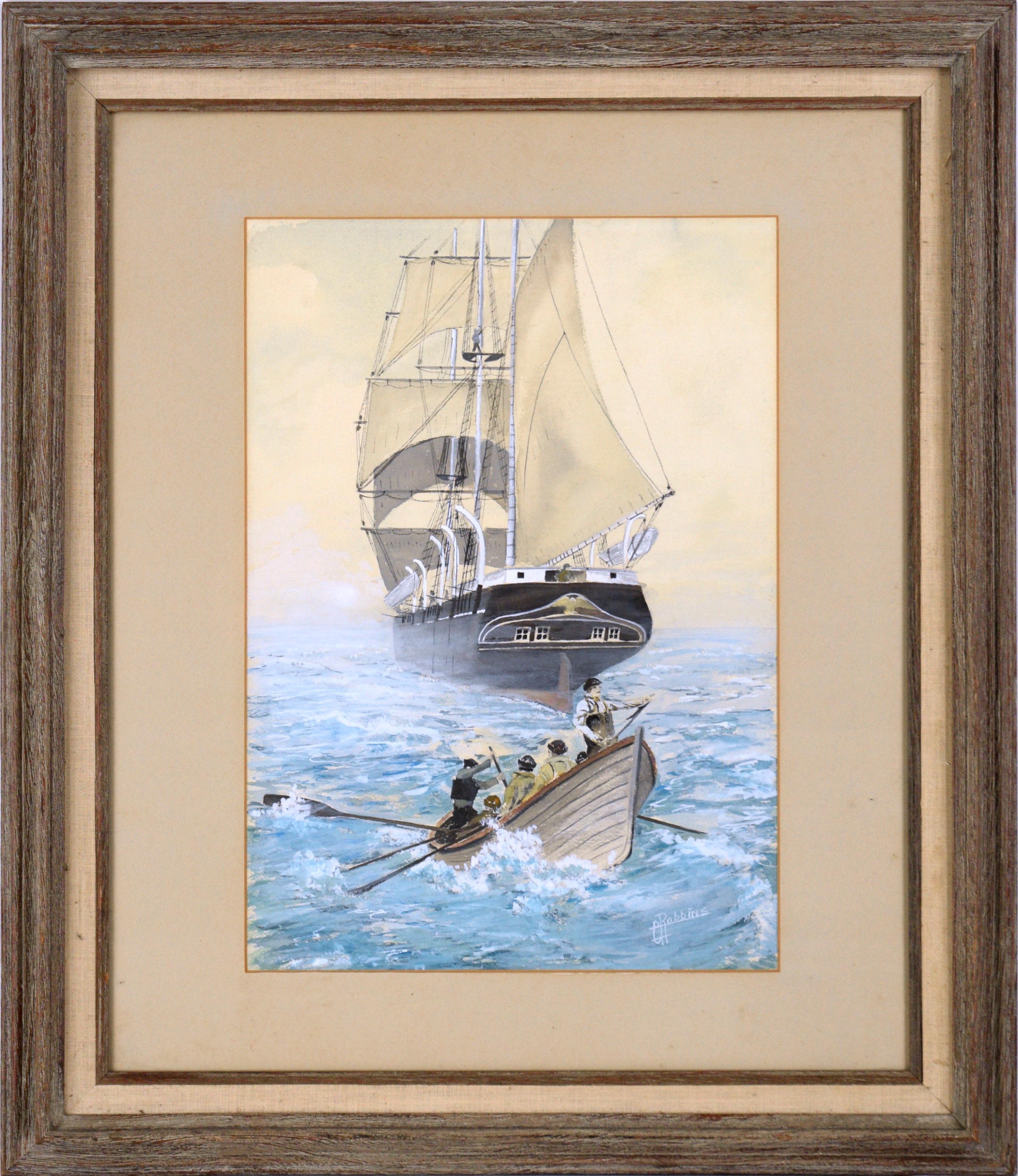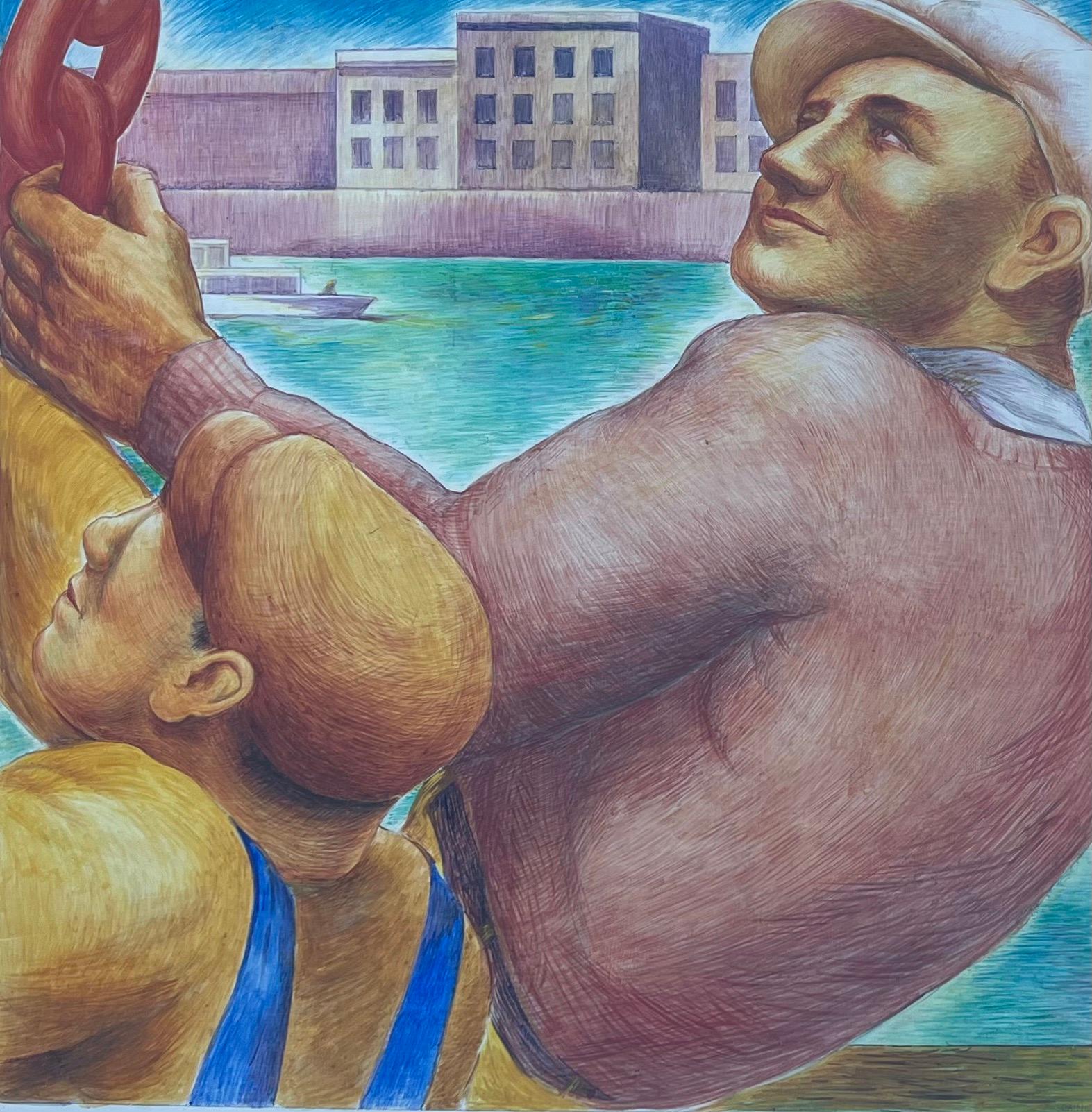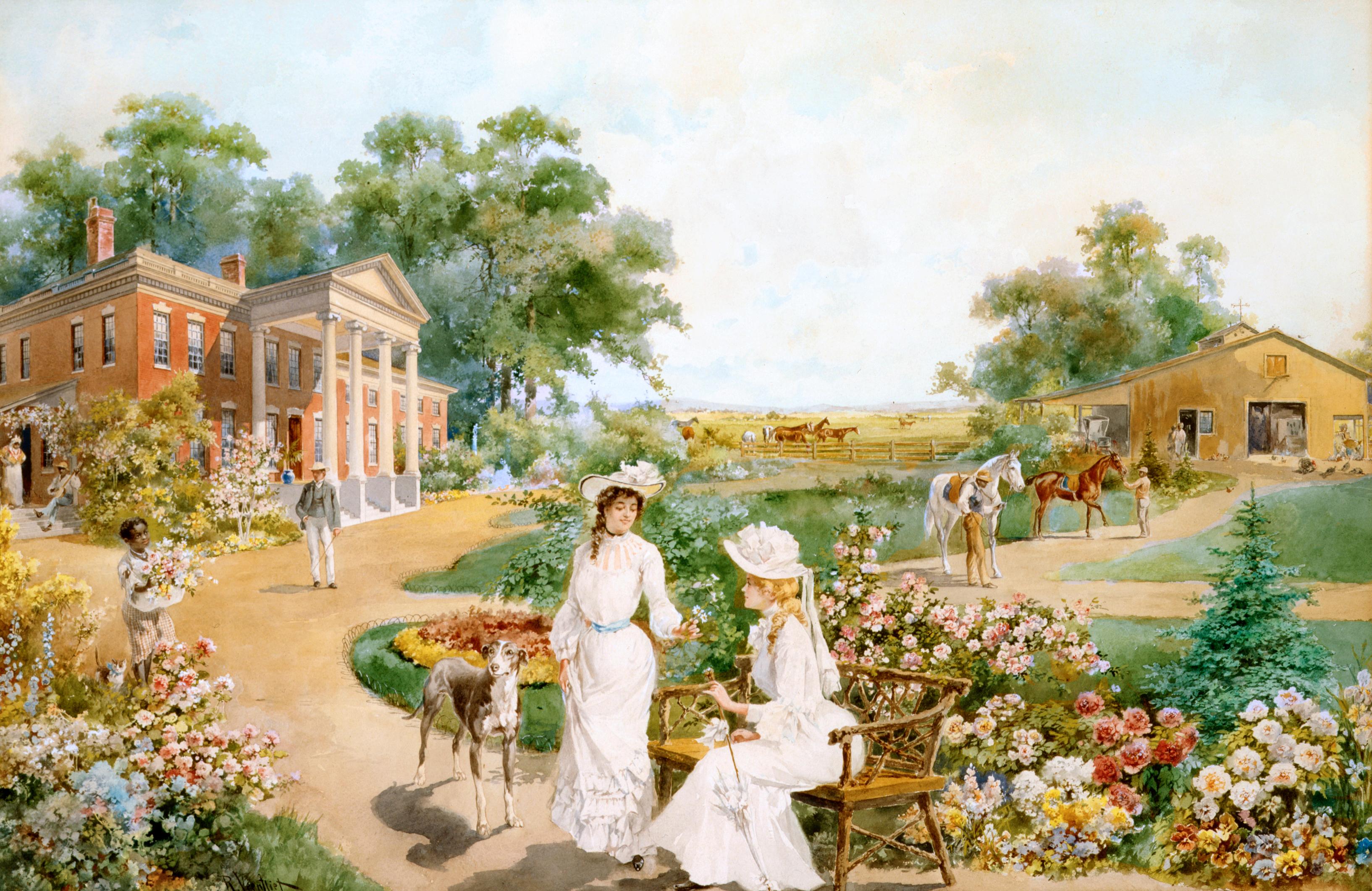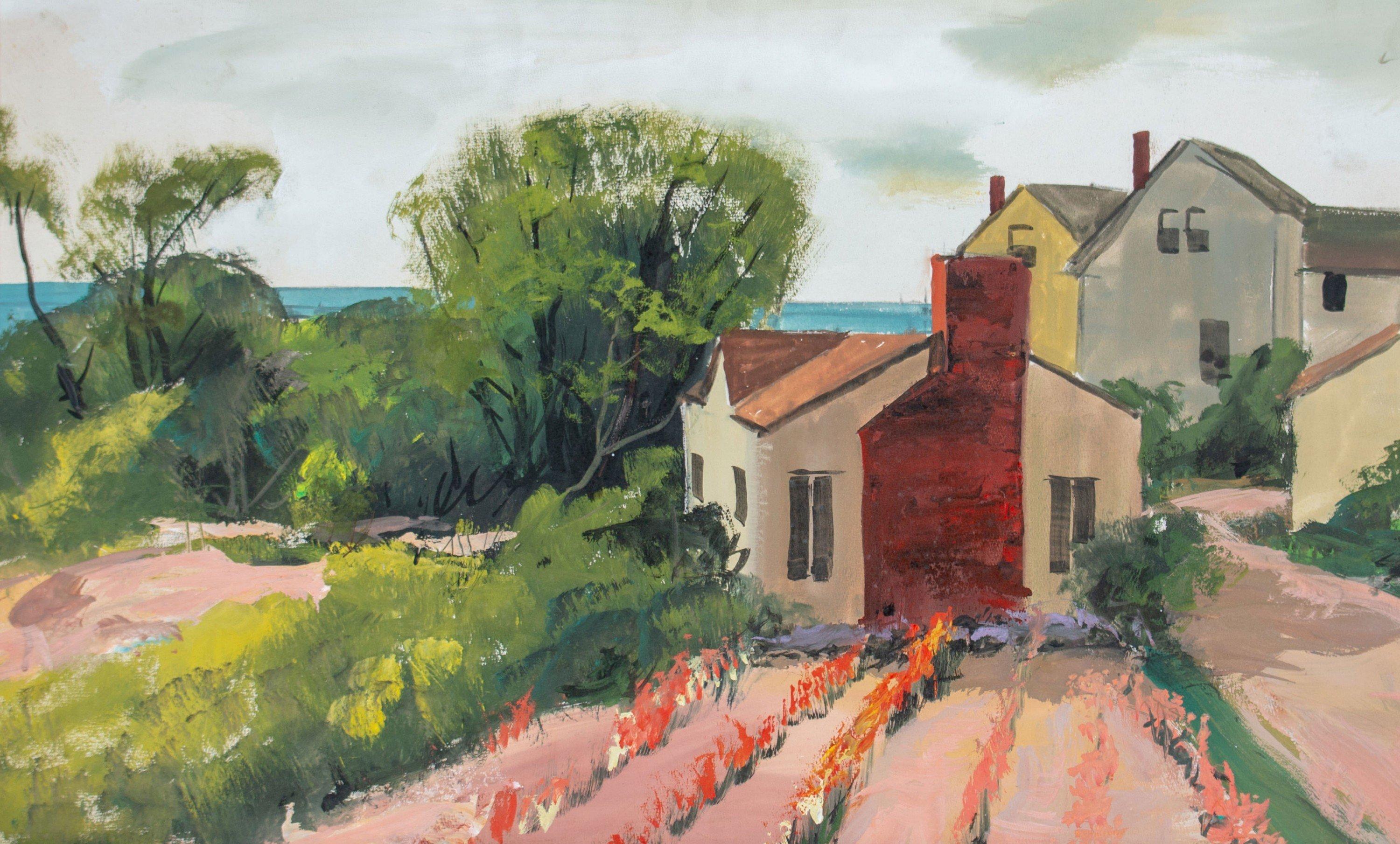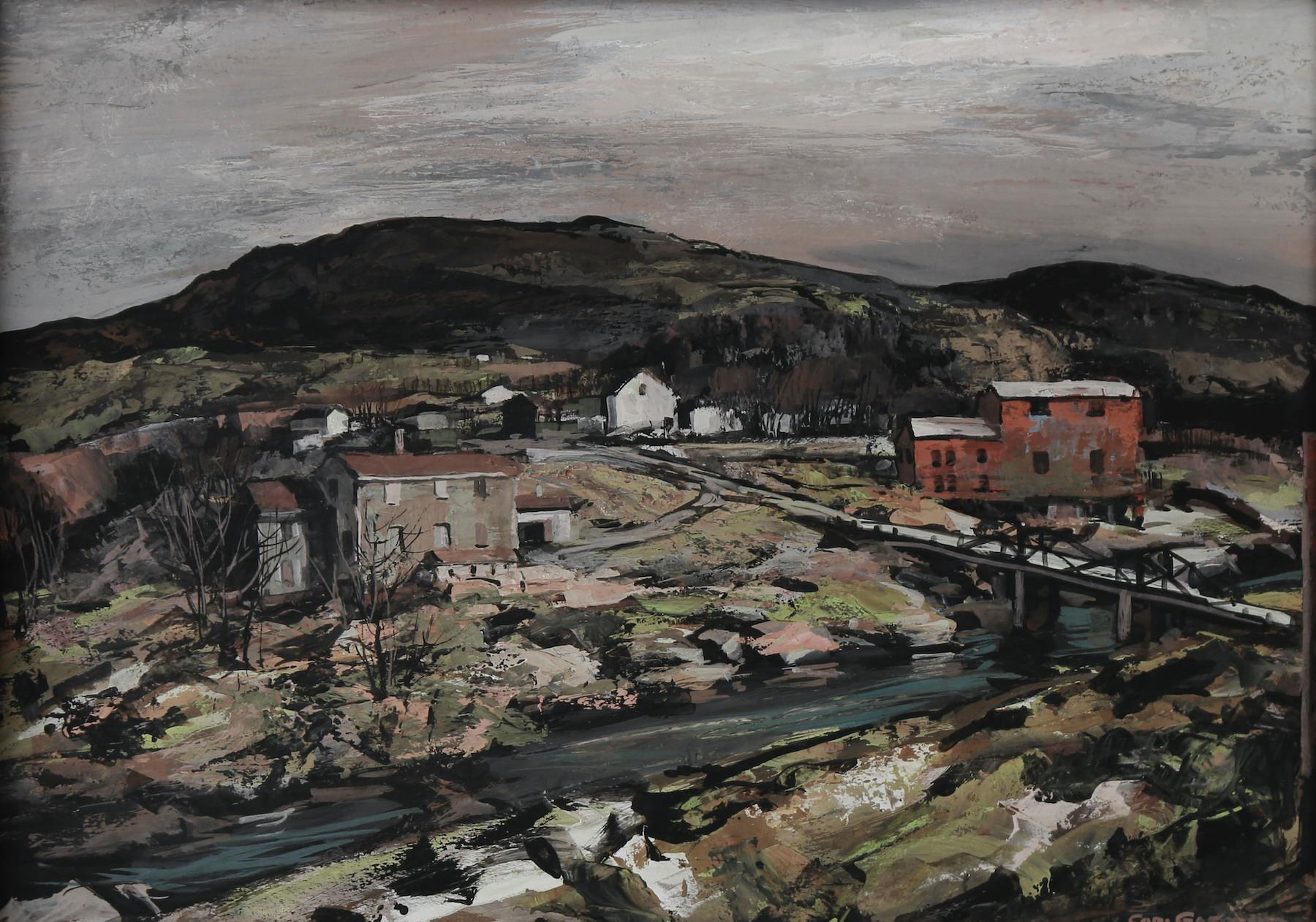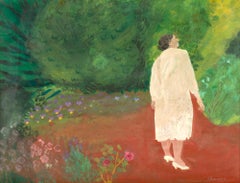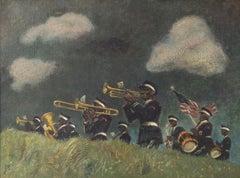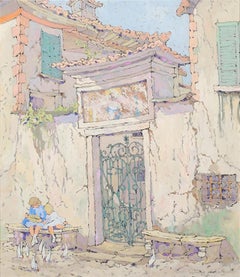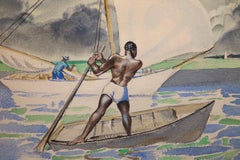"The Kiosk, Lincoln Park Zoo, Chicago" Aaron Bohrod, WPA Midwestern Regionalism
View Similar Items
Want more images or videos?
Request additional images or videos from the seller
1 of 10
Aaron Bohrod"The Kiosk, Lincoln Park Zoo, Chicago" Aaron Bohrod, WPA Midwestern Regionalism1932
1932
About the Item
- Creator:Aaron Bohrod (1907 - 1992, American)
- Creation Year:1932
- Dimensions:Height: 27 in (68.58 cm)Width: 22 in (55.88 cm)
- Medium:
- Movement & Style:
- Period:
- Condition:
- Gallery Location:New York, NY
- Reference Number:1stDibs: LU1841212251242
About the Seller
5.0
Platinum Seller
These expertly vetted sellers are 1stDibs' most experienced sellers and are rated highest by our customers.
Established in 2021
1stDibs seller since 2022
59 sales on 1stDibs
Typical response time: 1 hour
More From This SellerView All
- "Woman Listening, " Honore Sharrer, Magical Realism Landscape with Flora & FigureBy Honore SharrerLocated in New York, NYHonore Sharrer (1920 - 2009) Woman Listening Signed lower right Caseine on paper 15 x 20 inches Provenance: Forum Gallery, New York Private Collection ...Category
Late 20th Century American Realist Landscape Paintings
MaterialsPaper, Casein
$8,800 Sale Price20% Off - "Tully Lumber Mill, Orange, Massachusetts, " Dorothy Eaton, WPA Factory RuralLocated in New York, NYDorothy Eaton Tully Lumber Mill, Orange, Massachusetts, 1935 Signed and dated lower right Oil on canvas 17 1/2 x 23 1/2 inches Dorothy Eaton was born in East Orange, New Jersey in 1893. She studied at Smith College...Category
1930s American Realist Landscape Paintings
MaterialsCanvas, Oil
$4,200 Sale Price30% Off - "Military Marching Band, " Georges Schreiber, WPA, World War II, Black SoldiersBy Georges SchreiberLocated in New York, NYGeorges Schreiber The Procession (Military Band), 1945 Signed and dated lower left Oil on canvas 18 1/2 x 24 1/2 inches Provenance: David Kapp, New York From 1941 to 1945, Schreiber was commissioned by the United States Army and Navy to do a series of works. One project in 1943 was a joint effort with his friend Thomas Hart Benton to capture life aboard a submarine. Schreiber also painted the War Bond posters "Keep them Flying," "Back the Attack," and the fifth War Loan poster "Fire Away." "I don't want to be just an American with citizenship papers," Schreiber declared. "I want to completely associate myself with America" (Current Biography, p. 674). Born in Brussels, Belgium in 1904, Schreiber did precisely that and, over the course of his career, became a thoroughly American artist. Growing up in war-torn Europe, Schreiber was profoundly impacted by the horrors he witnessed. As a family of German descent living in Belgium during the First World War, the Schreibers were scorned by their neighbors; when they later returned to Germany, however, they were despised as Belgians. "All this has made me conscious of the times I live in . . . and the people I live with. It has made me strive with passion for human understanding in my work" (Current Biography, p. 673). Young Schreiber studied art in Belgium, at the Academy of Fine Art in Berlin and in London; related travels took him to Paris, Rome and Florence. From 1925 to 1928, he worked as a free-lance artist for German newspapers, a line of work he would continue upon his arrival in American in 1928. By 1936, he was employed with the Works Project Administration. An inveterate traveler, Schreiber visited each of the forty-eight states in 1939. The artist would ultimately make five cross-country journeys, from New England to California, Florida to Oregon, capturing contemporary American scenes with honesty and attention to detail. Considered en masse, Schreiber's oeuvre reveals the artist to be acutely aware of the world's brutal realities and keenly attuned to the characters he portrayed so powerfully. Schreiber exhibited his travel paintings as a Panorama of America at numerous galleries and museums across the country. "Louisiana Cotton Pickers...Category
1940s American Realist Landscape Paintings
MaterialsCanvas, Oil
- "Playground, Carl Schurz Park" George Picken, New York City, East River, UES WPABy George PickenLocated in New York, NYGeorge Picken Playground, Carl Schurz Park, 1938 Signed and dated lower left Oil on canvas 28 x 36 inches Provenance: Estate of the artist A native New Yorker, George Picken was born in 1898. His father, an artist and photographer, emigrated from Scotland; his mother came from Wales. They joined other European immigrants settling in New York City’s Hell’s Kitchen. Picken enlisted in the army during World War I and saw action at Verdun. After the war, he stayed in France and like many Americans returning from the vibrant Paris art scene, was inspired by the radical movement known as Impressionism. Upon his return Picken decided to follow in his father’s footsteps and become an artist. George began his studies in 1919 at the Art Students League during Robert Henri, Max Weber, and John Sloan’s tenure. There he took classes in studio art, illustration, and etching through 1923 studying extensively with George Bridgman. The writings of French philosopher Henri Bergson were widely circulated among the artistic community and looking at Picken’s early paintings one cannot help but wonder if as a young artist he was influenced by Bergson’s ideas. Bergson said, "[There are] two profoundly different ways of knowing a thing. The first implies that we move round the object; the second that we enter into it. The first depends on the point of view at which we are placed and on the symbols by which we express ourselves. The second neither depends on a point of view nor relies on any symbol. The first kind of knowledge may be said to stop at the relative; the second, in those cases where it is possible, to attain the absolute.” Picken’s recognition came early with showings of his work while he was a student. His drawings were published in the New Masses, a significant left-wing publication. The New York Public Library honored him with one-man shows in 1924 and 1928 and his work was included in group exhibitions at the Louis Comfort Tiffany Foundation, the Whitney Studio Club, Montross Gallery, and the Art Students League. During this time Picken married Viola Carton, one of Reginald Marsh’s models, and they lived in Westchester. Later they moved to Yorkville in Manhattan between 82nd street and East End Avenue where they began their family. Picken’s grandson Niles Jaeger recalled that, “Grandpa’s home and studio were in a five-story walk-up apartment, heated only by a coal stove. But there were wonderful views of the East River and the Queensborough Bridge...Category
1930s American Realist Landscape Paintings
MaterialsCanvas, Oil
- Saratoga Springs Racetrack, Summer Grandstand Crowd, Horse BettorsBy Anne DiggoryLocated in New York, NYAnne Diggory (b. 1951) Grandstand Crowd, Saratoga Springs Racecourse, New York Oil on panel 26 x 31 inches Initialed lower right: APD Anne Diggory lives ...Category
1970s Contemporary Figurative Paintings
MaterialsOil, Panel
- From the Grandstand - View of Racetrack and Crowd, Saratoga Springs, New YorkBy Anne DiggoryLocated in New York, NYAnne Diggory (b. 1951) From the Grandstand, Saratoga Springs Racecourse, New York Oil on panel 12 x 9 inches Anne Diggory lives in Saratoga Springs, NY, ...Category
1970s Contemporary Figurative Paintings
MaterialsOil, Board
You May Also Like
- The GatewayBy Eleanor Parke CustisLocated in New York, NYSigned (lower right): ELEANOR PARKE CUSTISCategory
20th Century American Realist Landscape Paintings
MaterialsPaper, Gouache
- 1840 rare watercolor, Native American encampment, Western Indian Unknown artistLocated in Buffalo, NYA rare mid 19th Century watercolor depicting Native Americans approaching a fort. The subjects appear to be from a Northern Plains Tribes, and arre approaching a palisades style f...Category
1840s American Realist Landscape Paintings
MaterialsPaper, Watercolor, Gouache
$3,495 Sale Price32% Off - Fishermen, Bahamas (North Carolina artist)By Frank Stanley HerringLocated in Wilton Manors, FLBeautiful ca. 1935 painting by American artist, Frank Stanley Herring (1894-1966). Watercolor on heavy rag handmade paper measures 14.5 x 19 inches, 23 x 28 inches in original vintag...Category
1930s American Realist Figurative Paintings
MaterialsHandmade Paper, Watercolor
$2,000 Sale Price20% Off - Rowing to Shore - Nautical Seascape in Gouache on PaperLocated in Soquel, CANoble nautical scene of a small rowboat coming to shore from a larger sailing vessel by George A. Robbins (American, 1918-2010). In the foreground, sever...Category
Late 20th Century American Realist Landscape Paintings
MaterialsPaper, Gouache
- Battle Scene At Sea World War II . Dead Soldiers and Blood Red SeaBy Mort KünstlerLocated in Miami, FLThe artist invents and then captures a moment of a peak drama with soldiers being shot and bombs exploding. It's beautifully rendered. This work was published as a two-page spread...Category
1960s American Realist Landscape Paintings
MaterialsGouache
- Circus WagonsBy Millard SheetsLocated in Los Angeles, CAThis watercolor is part of our exhibition America Coast to Coast: Artists of the 1930s Circus Wagons, 1927, watercolor on paper, signed and dated lower left, 10 x19 ¾ inches (sight), provenance includes Stary-Sheets Art Gallery (Gualala, CA); J. Ralph & Louis Stone Foundation; presented in a newer metal frame behind glazing About the Painting Millard Sheets was only twenty years old and in his third year of studies at the Chouinard Art Institute when he painted Circus Wagons. Despite his youth, Sheets was already an accomplished artist who had publicly exhibited his work and won prestigious prizes. Within several years, he would have his first solo exhibition at one of Los Angeles’ premiere galleries and become a painting instructor at his alma mater. In Circus Wagons we already see Sheets deft handling of the watercolor medium and his interest in the California Scene. In this case, Sheets captures a back lot view of a traveling circus, a subject he sometimes returned to, including in a color screen print in the collection of the National Gallery. Sheets made a career by painting what he knew and observed firsthand. This approach allowed Sheets to capture with authenticity the details of each narrative. Even with a narrowly limited palette and an economy of brushstrokes, Sheets effectively depicts the southern California scene with its strong and mysterious shadows, as well as the workers and circus animals. Seen through the hindsight of his six-decade long career, Circus Wagons offers a fascinating insight into the early development of California Scene painting which would by the mid-1930s become the best recognized style on the West Coast. About the Artist Millard Sheets was the dean of California watercolorists. His list of accomplishments is so extensive that his entry in Who was Who in American Art is over forty lines. Born in Pomona, California, Sheets became a painter at an early age, winning a prize at the Los Angeles County Fair in 1918. By the mid to late-1920s, Sheets became a regular at art exhibitions in the western part of the United States, winning several additional prizes before he reached the age of twenty-five. Sheets studied at the prestigious Chouinard Art Institute from 1925 through 1929 with Frank Tolles Chamberlin and Clarence Hinkle and had his first solo show with Los Angeles’ Dalzell Hatfield Gallery in 1929. During the 1930s, Sheets was invited to exhibit at almost every major American Museum and in many ways, his work came to represent the California watercolor school...Category
1920s American Realist Figurative Paintings
MaterialsWatercolor
Recently Viewed
View AllMore Ways To Browse
Aaron Curry
Panorama V1
Sandy Hook Painting
Vargas Original
19 Th Century Landscapes
Ben Turner
Harold Grey
John Olsen Artist
Malcom X
Nautical Lake Paintings Painting
Noyes George
Painting Of Dolomites
Red Bottom Shoes Women
Red Bottom Women Shoes
Red Bottom Womens Shoes
Red Bottoms Shoes Women
Rosemary Farrer
Sunburst Oil Painting
